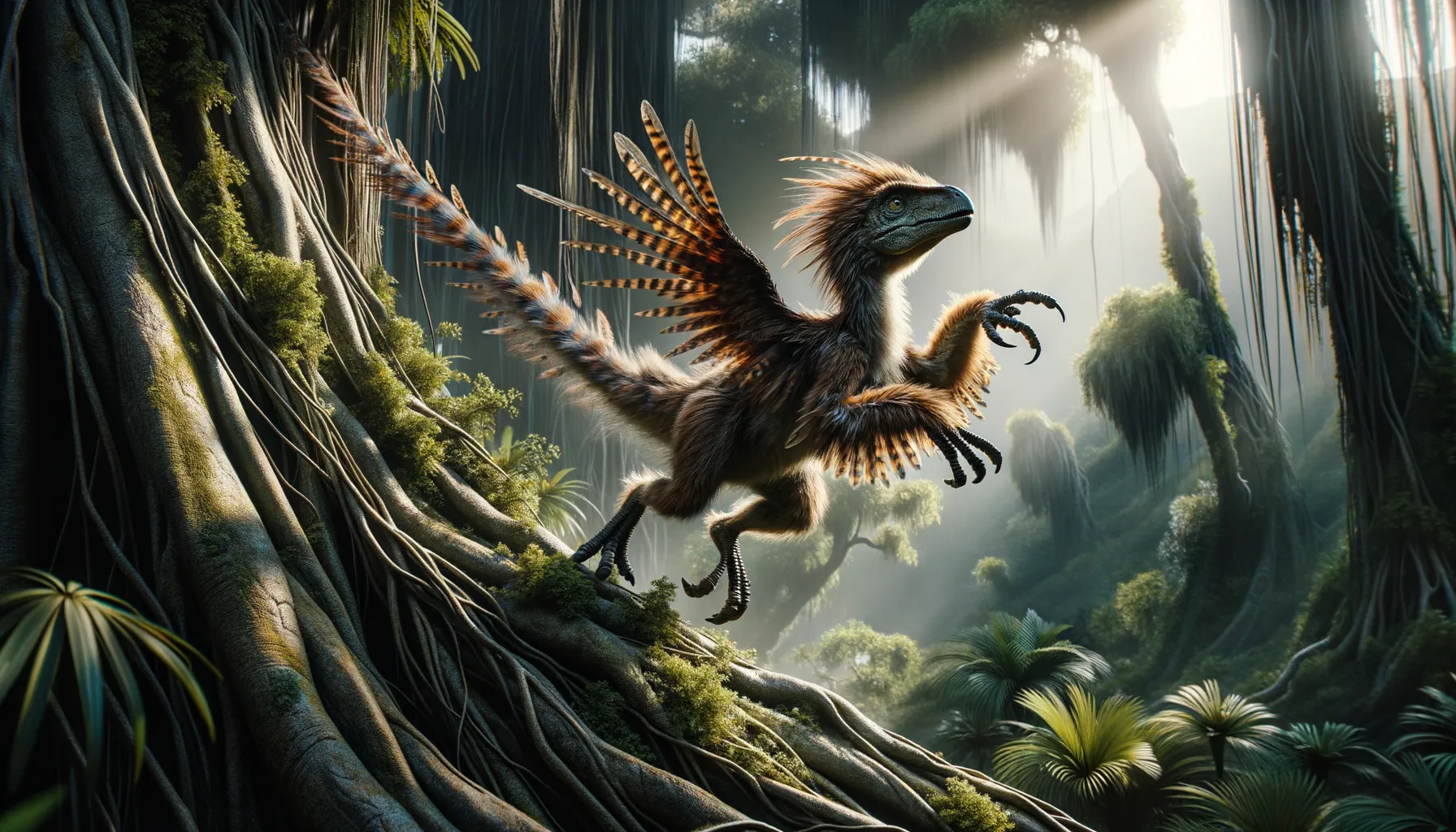
Epidendrosaurus
A tree-climbing pioneer of the Jurassic era.
Period
Jurassic
Length
Approximately 25 centimeters from head to tail.
Height
About 10 centimeters tall at the shoulder.
Weight
Estimated to weigh around 110 grams.
Epidendrosaurus was a small, feathered dinosaur species known for its unique adaptations that allowed it to live an arboreal lifestyle. Found in the Jurassic period, it is thought to be an early example of dinosaurs closely related to birds. Its partially elongated fingers suggest it used its hands for climbing, possibly scrambling through trees or shrubs, showcasing an intriguing evolutionary step towards avian descendants.
Diet
Epidendrosaurus likely fed on a variety of insects. Its long fingers may have been adapted for reaching into crevices to catch its prey.
Hunting
It most likely utilized a stealthy approach for hunting, using its agility to navigate through trees. Its diet mainly consisted of insects, which it could have ensnared with quick, precise movements.
Environmental challenges
Living in dense forests posed the challenge of avoiding larger predators, necessitating quick reflexes and acute awareness of its surroundings. The evolving climate of the Jurassic period might have influenced the availability of its prey, affecting its feeding habits. Changes in vegetation would also necessitate its adaptability to shifting food sources. Being a small dinosaur, it would have faced challenges in maintaining its niche in a diverse ecosystem.
Speed
Likely nimble and fast due to its small size.
Lifespan
Estimations suggest a relatively short lifespan similar to that of small birds today.
First discovery
Discovered in China in 2002.
Fun Facts
- Epidendrosaurus was a small, feathered dinosaur that lived about 160 million years ago during the Late Jurassic period.
- It is known for having an extraordinarily long third finger, which may have been used to help it climb trees or grab prey.
- Epidendrosaurus is one of the smallest dinosaurs discovered, with a body length of only about 25 centimeters (10 inches).
- This dinosaur is believed to have been an early relative of modern birds, showcasing some of the earliest adaptations for flight.
- Epidendrosaurus had feathers, suggesting it may have been warm-blooded like birds.
- Its fossils were first discovered in the Tiaojishan Formation of China, a region known for its rich deposits of well-preserved dinosaur remains.
- Epidendrosaurus' long fingers and feathered body suggest it led an arboreal lifestyle, spending much of its time in trees.
Growth and Development
Its development from hatchling to adult would have involved a rapid growth period, with early mastery of its climbing abilities being vital for its survival. Like modern birds, it may have grown feathers early in life for thermoregulation and camouflage. Juveniles would need to swiftly develop agility to navigate the complex terrain of its habitat. Family groups or a social structure could have provided juveniles with better odds of survival.
Habitat
Epidendrosaurus lived in a densely forested region with plenty of trees and plant life. The forest canopy provided shelter and a rich ecosystem for hunting and hiding. This environment required it to develop excellent climbing skills and adapt to life mostly off the ground. The multi-layered forest likely supported diverse fauna and flora, inviting a complexity of interactions.
Interaction with other species
Its small size made it vulnerable to predation from larger carnivores, necessitating a keen awareness and ability to quickly escape threats. It may have coexisted with other small theropods, sharing hunting grounds and occasionally competing for similar prey. Symbiotic relationships could have developed with non-competing species, which exercised mutual benefits like shared warnings of predators.
Natural lifespan
The natural lifespan of Epidendrosaurus was likely comparable to that of small modern birds, around several years.
Reproduction
Reproduction likely involved egg-laying, as is common with many theropod dinosaurs. Parental care could have been present, akin to modern avian behaviors, ensuring offspring reached maturity. Nesting sites would be strategically chosen to protect against predators and environmental threats. Clutches were probably small, demanding high parental investment for those that were successful.
Social behaviour
Epidendrosaurus might have lived in small groups or familial units, which provided protection and learning opportunities for young dinosaurs. Communication within groups could involve visual signals or calls, similar to those observed in birds today. Social structures could aid in cooperative hunting or defense strategies. Solitary behavior wasn't uncommon, especially during specific seasons or life stages.
Fossil locations
Fossils have primarily been found in Liaoning Province, China. The region is known for preserving numerous feathered dinosaurs, offering key insights into their adaptations. The well-preserved fossils suggest Epidendrosaurus lived in an area rich with vegetation and diverse wildlife. These fossils have significantly contributed to understanding the connection between dinosaurs and modern birds.
